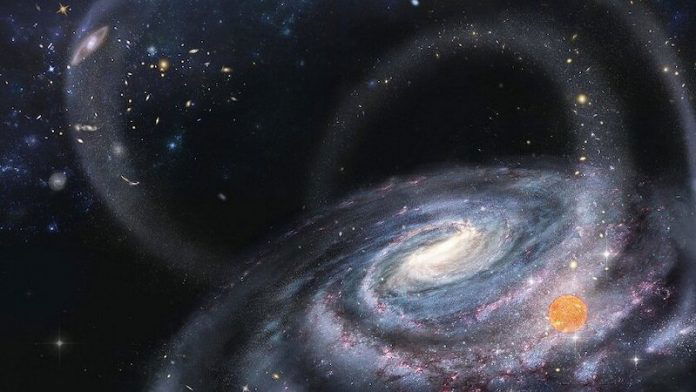
In a new study, scientists have discovered how a dwarf galaxy contributes to the growth of the Milky Way.
The finding is from a chemically peculiar star accreted from a disrupted dwarf galaxy.
The research was conducted by an international team led the National Astronomical Observatories of Chinese Academy of Sciences (NAOC).
Previous research has shown that dwarf galaxies could be the main building blocks of the Milky Way.
However, it has been unknown how many and what kind of stars in our galaxy originated from satellite dwarf galaxies.
In the current study, the team used the data from the Large Sky Area Multi-Object Fiber Spectroscopic Telescope (LAMOST) and Subaru telescope.
LAMOST is a spectroscopic survey telescope that takes 4,000 spectra in a single exposure.
So far, it has obtained more than 8 million stellar spectra for studies of the formation of the Milky Way.
The researchers found that the star has an unusually low amount of magnesium, the eighth most abundant element in the universe.
In addition, it contains an excessive amount of heavy elements such as europium, gold, and uranium.
The team suggests that the star originated from a dwarf galaxy that was disrupted by interaction with the Milky Way.
They suggest that the star formation in dwarf galaxies is relatively slow compared to larger galaxies and that this caused chemical differences among their stellar populations.
The finding also suggests that this dwarf galaxy was affected by a high-yield rapid neutron-capture process (r-process).
Such a process may happen during mergers of binary neutron stars in the dwarf galaxy.
The team believes the star they observed can be a good tracer for exploring the history of the Milky Way.
This is the first discovery of a star having a very low amount of magnesium and an excessive amount of heavy elements.
The lead author of the study is Zhao Gang, a professor from NAOC.
The study is published in Nature Astronomy.
Copyright © 2019 Knowridge Science Report. All rights reserved.



